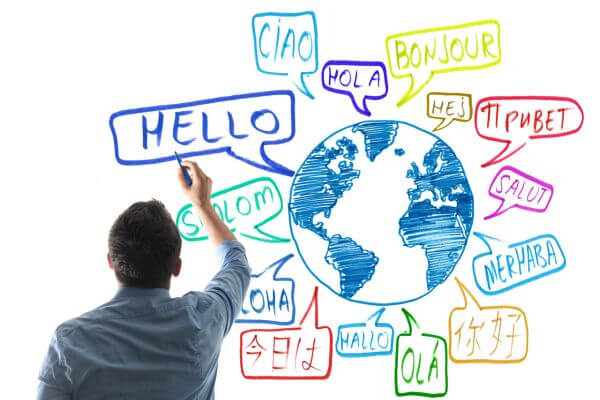The digital age has ushered in countless innovations, but few are as transformative as language processing and translation technology. This technology, once a distant dream, is now a reality, bridging gaps and connecting worlds.
From simple conversations to complex business negotiations, language barriers have always posed challenges. However, with the advent of advanced algorithms and machine learning, these barriers are crumbling.
As we delve deeper into this topic, we’ll uncover the intricacies of this technology, its evolution, and its profound impact on global communication.
The Evolution of Language Processing
The journey of language processing began with basic algorithms. Early attempts were rudimentary, often resulting in inaccurate translations. However, as technology advanced, so did the accuracy and efficiency of these tools.
Machine learning and artificial intelligence played pivotal roles in this evolution. By analyzing vast amounts of data, these systems learned nuances, idioms, and cultural contexts.
Today, language processing tools can understand, interpret, and even predict human language with astonishing accuracy, making real-time translations a reality.
The Power of Real-time Translations
Imagine a world where language barriers don’t exist—a world where everyone can communicate effortlessly. This is no longer a fantasy, thanks to real-time translation technology.
Business meetings, academic conferences, and even casual conversations have been revolutionized. With the aid of earbuds or apps, two individuals speaking different languages can understand each other instantly.
This not only fosters better communication but also promotes cultural understanding and global unity.

Overcoming Cultural Nuances
Language isn’t just about words; it’s about culture, context, and emotion. Early translation tools struggled with these nuances, often leading to misinterpretations.
However, modern systems are equipped to understand cultural references, idioms, and even humor. This ensures that the essence of the conversation remains intact, regardless of the language.
By bridging these cultural gaps, language processing technology is fostering deeper, more meaningful global connections.
Big Data and AI
The success of language processing hinges on data. The more data these systems analyze, the better they become. Big data provides a treasure trove of linguistic information, allowing AI systems to learn and adapt.
From understanding regional dialects to predicting emerging slang, AI’s role in language processing is indispensable. Its ability to constantly learn ensures that translation tools remain relevant and up-to-date.
As AI continues to evolve, we can expect even more accurate and nuanced translations in the future.

Challenges and the Road Ahead
Despite its advancements, language processing technology isn’t without challenges. Issues like data privacy, the preservation of minority languages, and the nuances of non-verbal communication remain. These challenges, while significant, offer opportunities for further innovation and refinement.
However, the potential of this technology is boundless. As it continues to evolve, it promises a future where language barriers are a thing of the past. The integration of AI and big data ensures that these tools remain adaptable and responsive to the ever-changing linguistic landscape.
The road ahead for language processing and translation technology is undoubtedly exciting. With continued research, collaboration, and innovation, we can anticipate a world where communication is truly universal, transcending borders and cultures.
Recommended for you
Economic Implications of Translation Technology
The economic benefits of language processing are profound. Businesses can now tap into markets previously inaccessible due to language barriers. This has led to increased trade, collaboration, and economic growth on a global scale.
Furthermore, industries like tourism, entertainment, and education are experiencing a boom. The ability to cater to a multilingual audience has opened up new revenue streams and opportunities. From dubbed movies to translated e-learning modules, the possibilities are endless.
However, it’s essential to strike a balance. While the technology offers economic advantages, it’s crucial to ensure that it doesn’t lead to cultural homogenization or the loss of linguistic diversity.

Ethical Considerations in Language Processing
As with any technology, ethical considerations are paramount. The use of AI in language processing raises questions about data privacy, consent, and the potential misuse of information. Ensuring transparency and user control is crucial to address these concerns.
Another pressing issue is the potential bias in AI algorithms. Since these systems learn from vast amounts of data, there’s a risk of perpetuating existing biases or stereotypes. Continuous monitoring and refining of these algorithms are essential to ensure fairness and accuracy.
Lastly, the preservation of minority languages is a concern. While the technology can help in documenting and preserving these languages, there’s also a risk of overshadowing them in favor of dominant languages. Striking a balance is crucial to ensure linguistic diversity.
The Future of Human and Machine Collaboration
The rise of language processing technology doesn’t signify the end of human translators or linguists. Instead, it offers an opportunity for collaboration. Human expertise combined with machine efficiency can lead to unparalleled results.
For instance, while machines can handle bulk translations, human experts are essential for nuanced, context-specific tasks. This synergy ensures that the translations are not only accurate but also culturally and contextually relevant.
The future lies in harnessing the strengths of both humans and machines. By working together, they can achieve results that are greater than the sum of their parts, ensuring effective and empathetic communication.

The Role of Community in Refining Translation Tools
User feedback is invaluable in refining language processing tools. Communities play a pivotal role in highlighting inaccuracies, suggesting improvements, and providing real-world context. This collaborative approach ensures that the tools remain relevant and effective.
Open-source projects and community-driven initiatives are gaining traction. They offer a platform for linguists, developers, and users to come together and contribute to the evolution of these tools.
By fostering a sense of community and collaboration, these tools can be continuously improved, ensuring that they cater to the diverse needs of users across the globe.
Embracing a Multilingual Digital Future
The digital age is inherently multilingual. As the internet continues to bring people closer, the need for effective communication tools becomes even more pressing. Language processing and translation technology are at the forefront of addressing this need.
From real-time translations in video calls to multilingual content on websites, the digital landscape is becoming increasingly inclusive. This inclusivity ensures that information, opportunities, and resources are accessible to all, regardless of language.
Embracing this multilingual digital future is not just a technological imperative but a social one. It fosters understanding, collaboration, and unity in an increasingly interconnected world.


